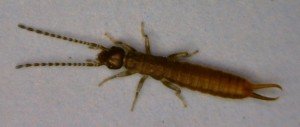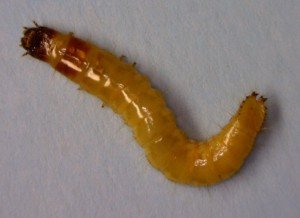Following the recent detection of symphyla in some cotton fields on the Darling Downs, DAFF Entomology have been testing sampling strategies for this potential pest of cotton.
Literature for a similar symphyla species in North America suggested that baiting with potatoes may be an effective strategy for assessing symphyla abundance and whether individuals were actively feeding or in a restive non-feeding developmental phase.
During the last fortnight we have been assessing a range of vegetable baits in a field where symphylans were recently found using soil sampling. So far none of the different baits tested (potatoes, pumpkin, pineapple, rockmelon etc) have been found to attract symphyla, however these baits have highlighted that the field is also host to very high numbers of black field earwigs and wireworm.
This might suggest that some of the damage that has been observed may be due to a complex of soil pests that remain largely undetected without bait sampling.
Many people have reported poor crop establishment in fields where only very low numbers of soil pests have been found with standard soil sampling. The large numbers of soil pests encountered on the baits demonstrates the need to use multiple sampling methods to determine the abundance of soil pests.
Soaked grain baits are recommended for sampling soil pests (see below). Soil pests are attracted to ethylene cues emitted by germinating grains. For fields that have had poor levels of crop establishment it may be worth baiting for these soil pests to help better determine the cause of what has been a perplexing start to the 2013/14 season for some cotton growers.
Germinating seed bait technique
Following planting rain or irrigation:
- Soak insecticide-free crop seed in water for at least two hours to initiate germination.
- Bury a dessertspoon full of the seed under 1 cm of soil at each corner of a 5×5 m square at five widely spaced sites per 100 ha.
- Mark the position of the seed baits as high populations of soil insects can completely destroy the baits.
- One day after seedling emergence, dig up the plants and count the insects.
Trials have shown that the type of seed used makes no noticeable difference when it comes to attracting soil-dwelling insects. However, using the type of seed to be sown as a crop is likely to indicate the species of pests which could damage that crop.


